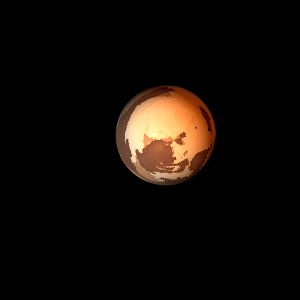|
|
Space Astro
|
Info for exoplanet "Aigwan"
| Scientific (actual) data |
|---|
| Name | Kepler-595 c |
| Planet status | Confirmed |
| Planet mass | 0.01038 |
| Radius | 0.09 |
| Orbital period | 12.386 |
| Discovered | 2020 |
| Updated | 2021-02-05 |
| Publication | Published in a refereed paper |
| Detection type | Primary Transit |
| Alternate names | 2MASS J19381689+5040228 c, K00547.03, KIC 12116489 c, KOI-547 c, KOI-547.03, TIC 27231753 c, WISE J193816.89+504022.8 c |
| Star name | Kepler-595 |
| Right ascension | 294.57° |
| Declination | 50.67° |
| Mag j | 13.335 |
| Mag h | 12.94 |
| Mag k | 12.862 |
| Star distance | 639 |
| Star metallicity | 0.08 |
| Star mass | 0.93 |
| Star radius | 0.82 |
| Star temperature | 5247 |
| Star alternate names | 2MASS J19381689+5040228, KIC 12116489, KOI-547, TIC 27231753, WISE J193816.89+504022.8 |
| Wikipedia article | Kepler-595 c |
Back
| |
| Fictional info (?) |
|---|
| Suggested name | Aigwan |
| Planet type | Cold planet |
| The polar regions are constantly below 207°K (-66°C). |
| Atmosphere | Sulfur dioxide | 94% |
| Ethane | 5.6% |
| Atmospheric pressure | 0.011 bar |
 |
| No known satellites |
| Google search for Aigwan |
|
Website by Joachim Michaelis
|
|
|
|